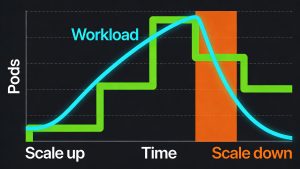In today’s fast-moving digital landscape, zero-day exploits have become one of the most severe threats to application security. Attackers no longer wait—they weaponize vulnerabilities within hours, forcing DevOps teams to respond instantly. Effective patch management can be the difference between a minor incident and a catastrophic breach. Yet, in many organizations, patching still feels reactive and chaotic. With the right automation and pipeline design, it can evolve into a smooth, predictable process that strengthens security without disrupting delivery cycles.
Why Patch Management Belongs in DevOps
Patch management has moved beyond a traditional IT concern. It now plays a crucial role within the software delivery lifecycle, intersecting build pipelines, runtime security, and continuous monitoring. Since vulnerabilities can exist in both development and production environments, integrating patching into continuous integration and delivery (CI/CD) pipelines ensures that issues are detected, patched, and redeployed efficiently.
Automated CVE (Common Vulnerabilities and Exposures) scanning acts as the cornerstone. By examining packages and container images during builds, teams can prevent unpatched dependencies from reaching later stages. When combined with Software Bill of Materials (SBOM)-driven dependency discovery, DevOps teams gain full visibility even into indirect components, reducing the time between identifying a vulnerability and locating it within the stack.
Modern pipelines enhance control through staged rollouts. Canary deployments, runtime feature flags, and automated rollback policies transform patching from a disruptive event into a continuous, low-risk workflow.
Automating Vulnerability Discovery
The speed of modern exploits leaves no room for manual vulnerability detection. Automation ensures that DevOps teams can identify weaknesses before they reach production. Integrating CVE scanners into CI/CD pipelines provides an early warning system by scanning images, containers, and libraries the moment they’re built.
Detailed SBOMs add intelligence to this process, linking each component to known vulnerabilities as global databases like NVD update. This visibility allows teams to prioritize vulnerabilities by severity, exposure, and potential business impact. Additionally, automated dependency discovery minimizes the risk of missing transitive libraries that could be exploited.
Continuous monitoring after deployment completes this security loop. Integrating vulnerability feeds with SBOM data creates a dynamic system that evolves with the threat landscape. Instead of reacting to new disclosures, DevOps teams can stay a step ahead, continuously assessing and remediating risks throughout the lifecycle.
CI Gating and Secure Artifact Promotion
Detection is only effective if it’s followed by immediate action. Continuous integration gating enables organizations to enforce strict security thresholds. Pipelines automatically block any unpatched artifacts from progressing beyond build stages until vulnerabilities are resolved.
This approach embeds security directly into the development process, ensuring that only compliant and patched artifacts move forward. Developers get actionable feedback early, allowing them to remediate issues on the spot rather than post-release. Once patches are applied, automated tests and redeployments ensure systems remain stable and secure.
With CI gating, patching becomes routine rather than reactionary. Security is no longer a separate step—it’s an embedded safeguard within every integration cycle, reducing the likelihood of last-minute delays or unapproved releases.
Controlled Rollouts and Runtime Resilience
Even the best patches can sometimes cause unexpected side effects, which is why controlled rollouts are central to modern DevOps security. Canary releases allow teams to expose patches to a small group of users first, measure system behavior, and expand deployment progressively.
Comprehensive observability tools monitor performance, latency, and error rates, helping engineers confirm patch stability. Feature flags add another safety layer by letting teams instantly disable malfunctioning features without a full rollback.
In parallel, automated rollback policies ensure quick recovery when issues arise. If metrics indicate degraded performance, the system can automatically revert to the previous stable version. This balance between speed and stability ensures patching enhances reliability rather than jeopardizing it.
Runtime mitigation strategies empower DevOps teams to act decisively. They no longer have to choose between security and uptime—patches can be applied, observed, and rolled back seamlessly within the same pipeline.
Making Patching Routine and Reliable
In mature DevOps organizations, patching is no longer a firefight; it’s a routine. Automation enforces consistency, while observability and rollback systems build confidence that patching will not disrupt operations. Integrating patch management into CI/CD pipelines makes vulnerability handling habitual rather than stressful.
Industry leaders now measure mean time to patch (MTTP), track vulnerability SLA compliance, and link patch metrics to overall system performance. These data-driven practices help teams view security and velocity as complementary objectives.
When patching becomes a regular rhythm, teams spend less time managing crises and more time driving innovation. Systems operate more reliably, compliance becomes easier to maintain, and attackers find fewer gaps to exploit.
Conclusion
The reactive model of patching is no longer viable in an age where threats evolve faster than ever. Zero-day vulnerabilities, automated attacks, and growing code dependency chains demand a proactive mindset. By embedding patch management within DevOps pipelines, organizations build security directly into their software lifecycle.
Patch management in DevOps is not merely a defensive mechanism—it’s a reliability strategy. When executed effectively, it safeguards delivery pipelines, protects customer trust, and builds the resilience modern businesses require to stay ahead of cyber threats.
Read more such articles from our Newsletter here.



